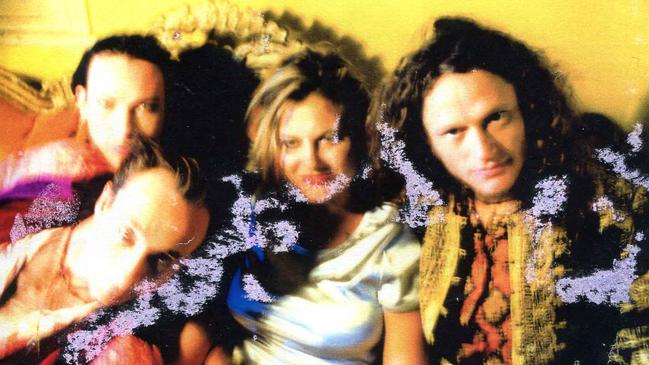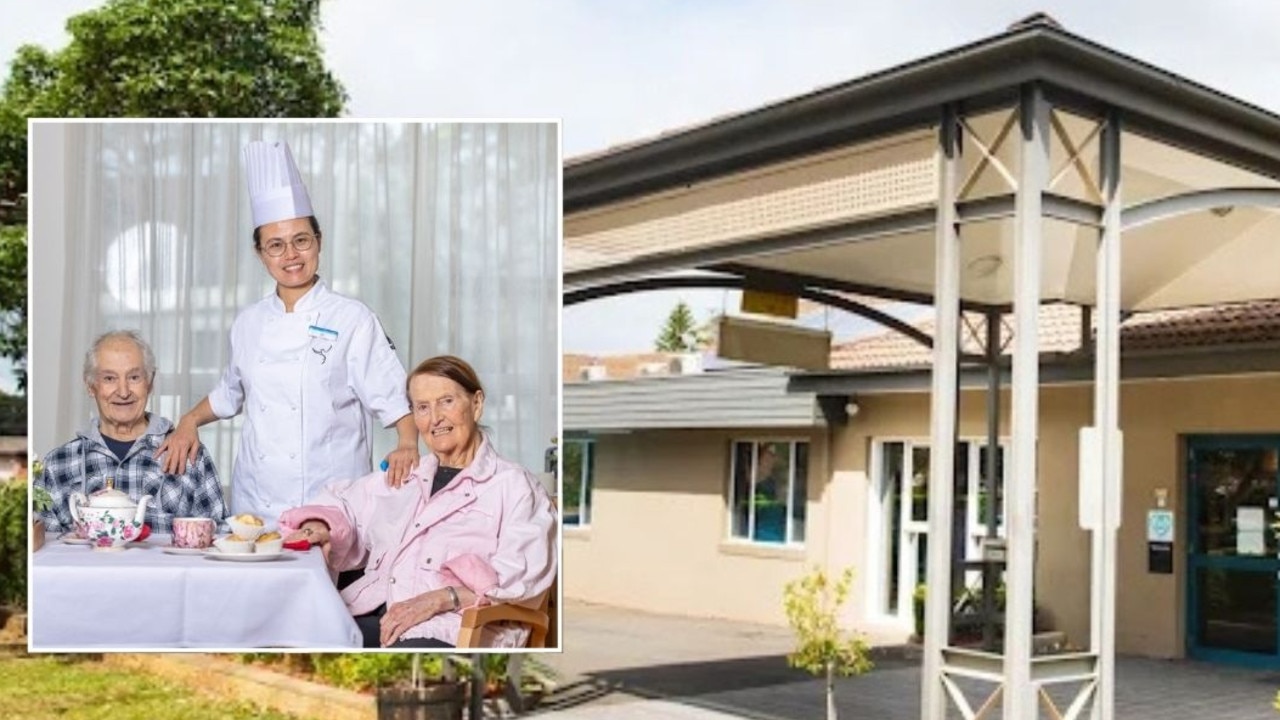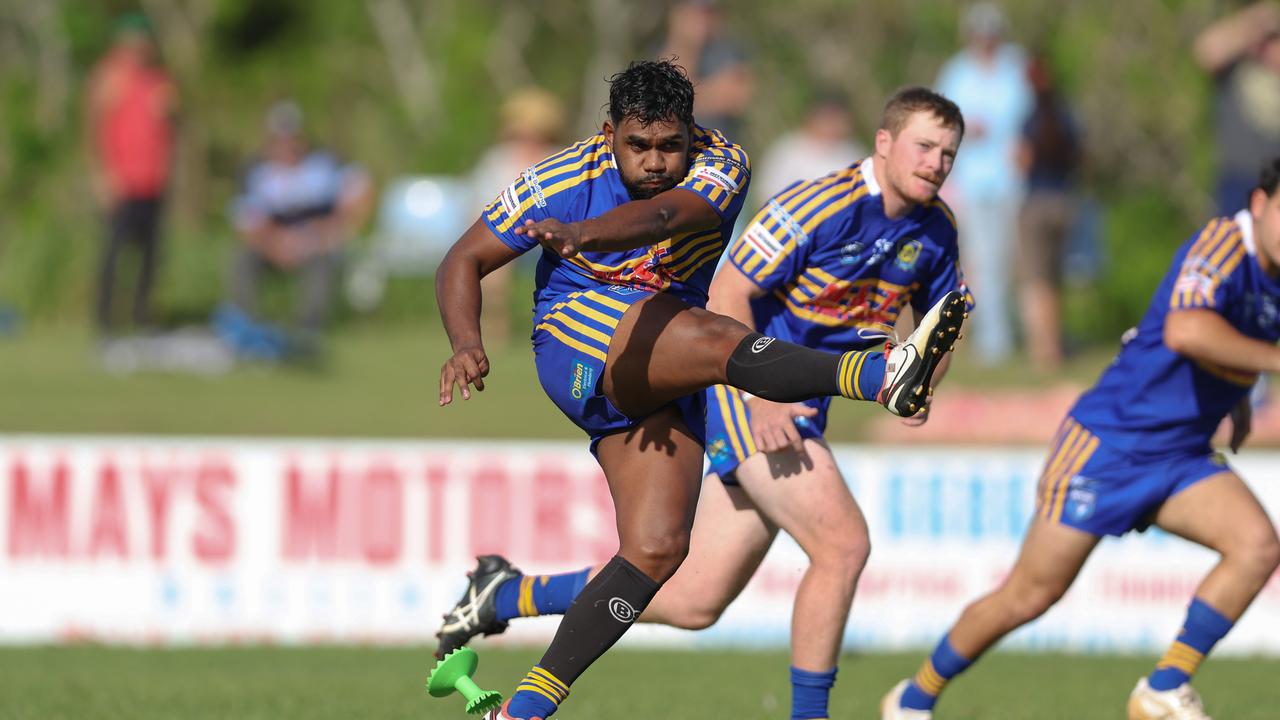Flashback 1990s: Lismore the fertile ground for original music
Lismore’s 90s cultural music landscape has been described as a ‘fertile incubator’ for original music. Read our slice in time from those that lived it.
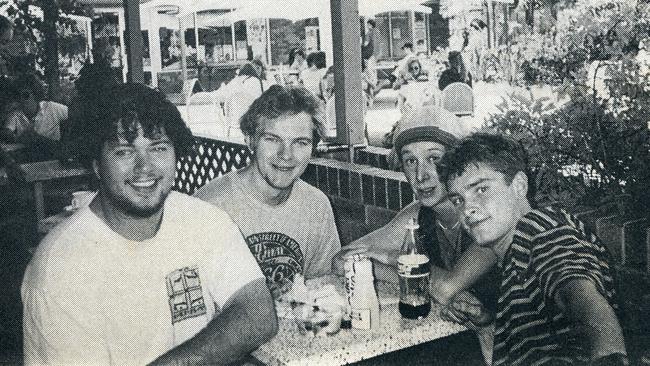
Lismore
Don't miss out on the headlines from Lismore. Followed categories will be added to My News.
The Remains Leigh Ivin said ‘bands are always the sums of the cast and the right people make a great band – even if they only last 2 years’.
During the 1990s in Lismore, the musical landscape was a fertile, thriving economy with an abundance of fresh new original music available to audiences from the coast to the cities.
For teenage art student come photographer and band manager, Lorry Driver, the lure of the Lismore music scene has had a lasting impact on her life.
“I had just come from high school into east Sydney technical college studying a diploma of fine art in Darlinghurst,” she said.
She moved to Lismore with her family, transferring her course to the newly established Southern Cross University.
“That’s where everything was dramatically different,” she said.
“You had the New Tattersalls Hotel holding gigs three to four nights a week, and I’d heard from my Mum’s friends that the Tatts had been around for years as a venue for live music.
“I got right into the music scene even though I was doing a degree in visual art. I got heavily involved with the SRC, the student newspaper, politics and the music scene … the music scene mainly.”
The Northern Rivers College of Advanced Education had just moved their contemporary music program to the then new Southern Cross University, which had received substantial government funding for state of the art studio recording and performing equipment.
NRCAE stayed on as a music education provider as the newly formed Northern Rivers Conservatorium Arts Centre (The Con).
Mr Ivin said early Uni bands in the 90s like Bloody Mary, when the music course was still at the Con, were what live music was about.
“Bloody Mary were a funk/punk/rock band,” he said.
“They had 3 members; frontman Ben Rosen, Seamus Coye and Mick Sellers.”
Mr Ivin added that their bassist was quite successful in commercial music now.
“They were of Red Hot Chili Peppers ilk, an awesome pub party band – they were all about the grooves and the rhythms,” he said.
“Bloody Mary were a great live band – they played great fun music that people went berserk about.”
Fellow Remains band member and music journalist Mick Daley said the 90s era was ‘a very vibrant thing’.
“’93 I landed in Lismore,” he said.
“There was 5 or 6 venues playing every night.
“The Tatts had 3 stages going 3 nights a week.
“People could afford to go to Uni so there were heaps of Uni students out and active.”
Regular gigs at the New Tattersalls Hotel and the Gollan Hotel combined with an welcome pub circuit were the keystones to fostering new and existing talent in Lismore and on the North Coast.
Coupled with a cashed-up music department at the new University who still partnered with the Con attracted talent to the area in droves.
“We were all the black sheep from little country towns,” Ms Driver said.
Ms Driver added that as a lot of like-minded people gravitated to Lismore she felt she had ‘found her crew’.
“It was very inspiring and motivating to all of us,” she said.
The influx of musicians, artists, media and environmental science students culminated in a cultural smorgasbord that cross-pollinated ideas, styles, and thought paradigms that made the time ‘fertile for creativity’.
“When I turned up on the scene, Pre Fab Jazz and Fire-Eye which then became Headlifter, were pretty big local bands and those band members then moved on to other things like the band Hubcap which later became Grinspoon,” Ms Driver said.
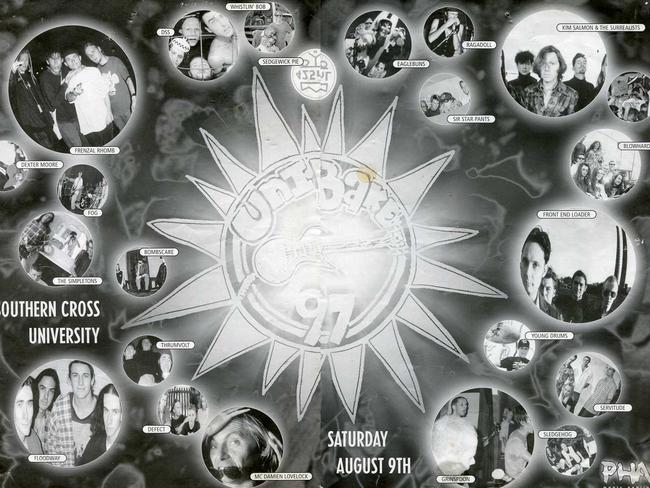
Leigh Ivin attributed the origins of his band to ‘definitely the Lismore 90s scene’.
“The diversity of the scene fed into why it was so creative in Lismore,” he said.
“There was lots of kinds of music and lots of gigs putting it in front of people and it was really fertile.
“The different kinds of people into funk, grunge, dance, tribal, world, rock. metal etc and even if that wasn’t your bag you’d go see other acts and take something away from it.”
Mr Ivin said musicians engaged in their craft can’t help but hear other artists and go and watch each other’s gigs.
“Sp@wn used to watch Ulterior and we’d watch ‘em and try to beat ‘em in band comps at the uni and the fact there was a lot of gigs, we could play 3 gigs in a weekend and it got competitive.
“The Tatts hotel I remember in ‘93, ‘94 had a band in the back, the middle, and a couple in the front and it was that fertile and packed wall to wall, people drinking and smoking and having a great time.
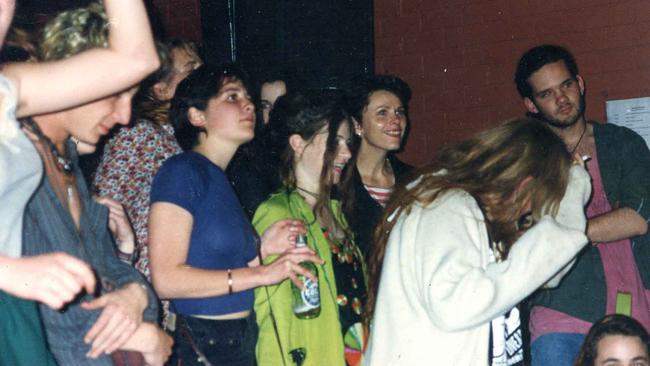
“Grinspoon had intent as well as personnel – the ingredients went together,” he said.
He said they would not have come out of anywhere else.
“The front man was really punky and how that band came together was quite intentional.
“Pat and Joe were in lots of punk and funk bands and Grinspoon was the hybrid of those,” Mr Ivin said.
Many bands sprouted in this climate, some winning band competitions yet didn’t survive beyond two years.
“The period of time we existed was really fertile, we’d jam every day,” Mr Ivin said.
“Things would happen really quickly … you’d write a set worth of songs and go out and play a gig with it.
“It was the immediacy of it – you’d go see a band that didn’t exist (Magic Lift) before and be inspired then go and try and emulate it yourself.”
Mr Ivin added that the internet hadn’t happened yet and the time was ‘a really good perfect storm’.
“Being in my final year of uni – in ‘95, and went to the library and someone showed us the internet and here it took like 10 minutes to send an email.
“We hated it was boring.
“The music scene has suffered because people can sit at home and be easily entertained for next to nothing,” he said.
“The idea we’d go out and do 3 gigs in a weekend is out of their conscious – netflix is killing the culture of live music, and there are so few live gigs today.”
Mr Daley said the cultural landscape has changed because publicans don’t support live music or are too conservative and only want covers bands.
“It’s societal, very few people can be on the dole, or at uni, or protesting,” he said.
“All country bush halls culture too, we’d hire a hall and have a great time but with all the people moving from the city it’s hard to hire a hall because they don‘t want loud music.”
Ms Driver quipped that towards the 2000s the Tatts got a new publican that wasn’t too focused on the music.
“I tried to book a few gigs there, ‘Conflict’ was one of the bigger last ones, a Punk band from the UK and that was a cramped night – it was great!” she said.

Lorry Driver and Mark Rodham worked a lot together to promote the music culture in Lismore in the 90s with the objective of getting students out of the classroom into the real world.
Ms Driver said it’s completely different getting up on stage to play live compared to being in a classroom.
“The beauty of playing live is that you don’t necessarily control that environment. Some bands could improvise because they were good musicians and were very creatively oriented.”
She said the time was a real ‘coming together of different people from different places’.
“But in that there was ripples, so there was my circle of crew that I knew and that rippled out to another circle of crew that had started Uni a couple years beforehand and it kept rolling like that.
“I loved the Tatts because it was this dark dingy thing out back and you could have all the straighty-180s and beer-drinking nine to fivers in the front and it’d be a completely different world out the back.
“I used to do the lights which was basically two pairs of light switches and you’d go on, off, on off on off with the music, it was so dodgy but it was great.”
Ms Driver said the Lismore Club had incredible sound.
“That’s where we did my homegrown gigs with Mark (Rodham of Ulterior),” she said.
“We had a thing of four bands for five bucks and we’d fill the place to three-quarters capacity which is pretty good when they’re no name bands, just local crew.
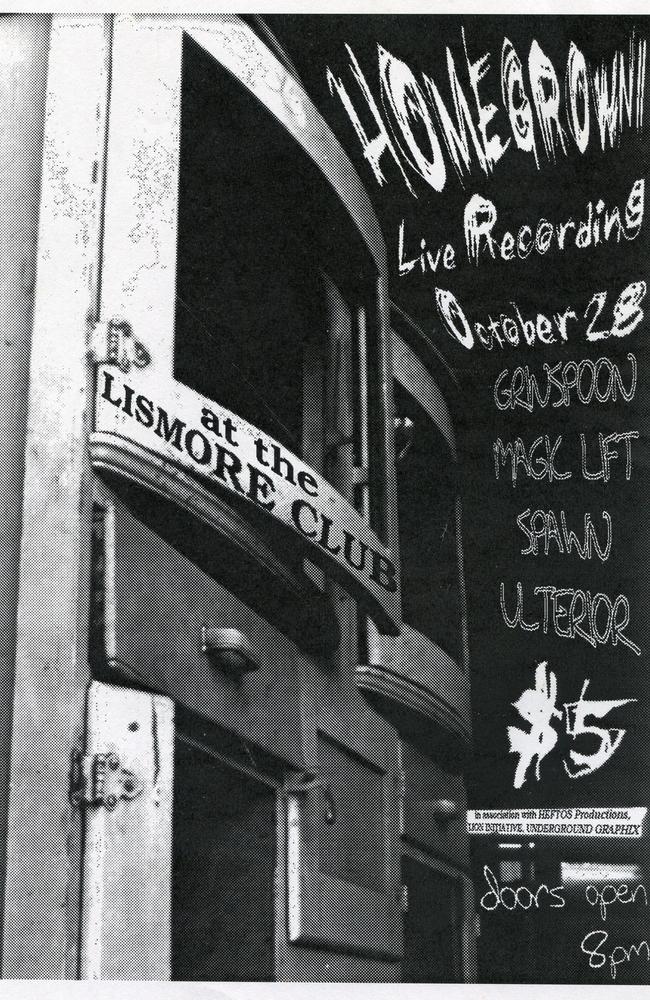
“Sp@wn, Potbelly and Ulterior from the Uni collaborated and recorded an EP/CD and then toured up and down the coast and that was called the ‘Compost Tour’.
She added that the time felt like every little segment of Lismore had someone jamming in their garage.
“There were two elements, the local scene that was quite prolific – a great incubator, but you also had other acts come through to; unknowns – which are great because you get exposed to completely different music and influences.
“One of the bands I managed, Fuming Humus, they were like a death-metal funk and groove improvisation jazz band, and Klang were a bit more percussive and not death-metalish.
“There was a lot of experimental sort of stuff but with real good experience to back it up,” Ms Driver said.
Lismore came alive on Thursday nights when downtown would be packed with students from the Uni and the Con. As the pub bands wrapped up kickers-on would trickle around to the last open pub in town, the Canberra Hotel and party til dawn.
“Monday and Wednesday nights were jam nights and the Gollan more dominated the jam night thing,” she said.
As interest for live music waned from the Tatts, on the opposite corner, the Gollan Hotel picked up the reigns.
Bands like the Breeding Ground, Hubcap, Grinspoon and Sp@wn all played at the Rous Hotel and the Italo club had random big acts like Def FX, Skunk Hour, the Porkers and Bodyjar play every few months.
“The Uni bar had a bit more money and could get bigger bands like the Living End, Spiderbait and Regurgitator who played there,” Ms Driver said.
Ms Driver, Mr Daley and Mr Ivin all agree that the 90s were great times for cultivating original music and that there has been nothing like it since.
Mr Daley said his band did their first gig with Grinspoon who then were unearthed.
“Could have been Dr Suess’ Signature but they were a bit dysfunctional so Grinspoon won out,” he said.
Ms Driver was sharing a house with lead guitarist Pat Davern when the band was jamming and getting their music together.
“It wasn’t just an amazing time, a lot of people spun off and they made careers out of it and that’s the good side of supporting an arts and music culture,” she said.
“It’s not just this little ‘do something after high school and spin for a few years’ – it’s actually a serious profession.
“Joe Hansen, the bassist out of Grinspoon was in Headlifter and maybe Pre Fab Jazz and he’s now in the band Son of Jaguar so he’s still doing his thing.
“Pete, the singer from Mr Plow, he was also the lead singer in Sp@wn and has gone to the TV world but still jams.
“Reuben, the bassist from Dr Seuss’s Signature became a piano tuner in Lismore for awhile.
“I remember being at the Pig Pan at Tugan or Currumbin, a massive place,” Ms Driver said.
“They had a divided audience and then their band/stage so there was this little area about a tablewidth wide where people with media passes could go and I’ve been a Mike Patton (Faith No More) fan for a long time and there I was with my camera and I was so nervous.
“I was like taking photos, and this was in a time when you had to send your film off to be developed, and then I got the photos back and most of them were all blurry.
“Like there were some great shots when he (Patton) has gone and done a little thing for me right there, but because I was so nervous and the crowd was right beside me and I wasn’t used to it I didn’t take the best photos.”


